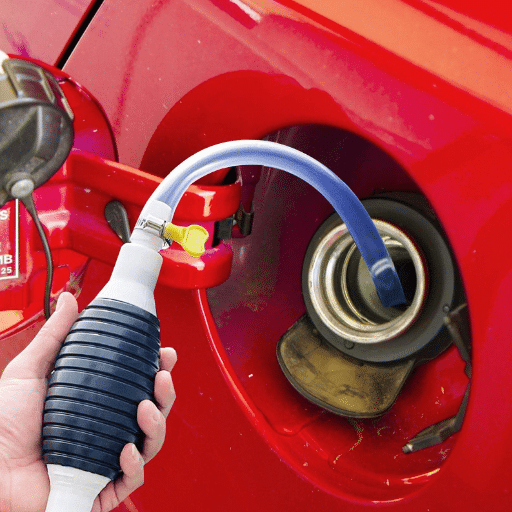Transportation, in its rapidly changing climate, will shape how fuel and charging are thought of for vehicles. Whereas gas stations once lined most major highways, the network of EV charging stations is rapidly growing, and simply knowing the density and distribution of these resources has become a higher priority. This article examines the critical factors that affect their availability, the constraints posed by regional trends, and how such networks help facilitate sustainable mobility. For the commuter, road trip enthusiast, or environmental advocate, they will have some insights into the current and future state of out-fueling and out-charging infrastructure.
Understanding Gas Stations and Charging Stations
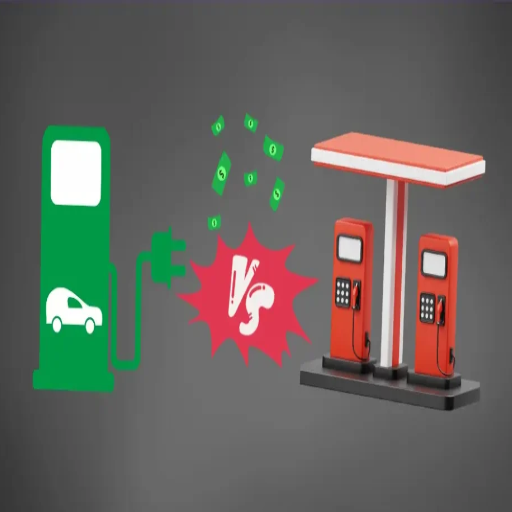
The refueling and recharging needs of vehicles are met by gas stations for combustion vehicles and charging stations for electric vehicles (EVs), respectively. Gas stations usually dispense petrol or diesel, which provides power to most cars on the road today. Charging stations provide a smooth interface for EVs to keep up with the fast expansion, which helps clean energy solutions grow. Accessibility, availability, and speed are the three key factors that determine the reliability of these stations from the perspective of drivers who depend on them for the smooth operation of their vehicles. While gas stations have been dominating in most areas of the world, charging stations are working to grow as the demand for EVs increases, thereby shaping mobility for the future.
What is a Gas Station?
These are a couple of words for gas stations in the States. Generally, gas stations supply fuel, such as gasoline and diesel, required for internal combustion engines or diesel engines. Modern gas stations, however, have multiple dispensers that enable speedy refueling of vehicles. Recent industry data indicate that there are approximately 150,000 gas stations in the USA alone, serving millions of customers daily.
Fuel dispensing is not the only service provided by gas stations; other services are also offered. Many gas stations contain mini-marts where customers can purchase snacks, beverages, and other essentials. Some also provide car wash services, air stations for tire inflation, and sometimes auto repair services. Using such services, a traveler can quickly refuel and get back on the road to accomplish whatever short- or long-distance activity awaits them.
From a macroeconomic perspective, the chain makes a significant contribution to the energy sector, and thus, indirectly to the local economy. Gas stations are adapting to new technologies, currently featuring mobile payment and loyalty programs. From their origins as primarily fossil fuel dispensers, the next generation of gas stations will likely be dispensing alternative energies, such as liquid propane or hydrogen fuel, in response to increasing market demands and a shift toward greener energy options.
What is an EV Charging Station?
An EV charging station is an electric charging solution set up to recharge the batteries of electric vehicles. Charging stations supply electrical energy under various charging levels: Level 1 (standard outlet), Level 2 (faster charging using a higher voltage), and DC fast charging (high-speed charging over a short period). They may also be installed at residential, commercial, or public locations, ensuring that the owners find it convenient to top up the batteries of their EVs. Increasingly, such stations are incorporating functionalities such as smartphone payment, recharge status monitoring, and even renewable energy sources like solar power to promote sustainability. As the number of electric vehicles rises, these stations stand out as an essential part of contemporary infrastructure, contributing to lower greenhouse gas emissions and cleaner transportation.
Differences Between Fuel and Electric Charging
Fuel charging or refueling internal combustion engine (ICE) vehicles is a much different procedure compared with EV charging. One of these differences is the time it takes to refuel or recharge. Typically, fueling a gasoline or diesel automobile takes only 3-5 minutes, whereas charging an electric vehicle can take anywhere from 30 minutes to a few hours, depending on the charging station type and the vehicle’s battery capacity. The fast chargers, i.e., DC chargers, can charge up to 80% of the battery in 30 minutes, while the slow Level 1 or Level 2 chargers take 8-12 hours for a full charge.
Infrastructure and energy sources constitute another difference between these two. Fuel stations are almost everywhere and number over 100,000 throughout the U.S. EV charging points, however, are still catching up with their larger counterparts in terms of numbers and counted ports, with around 140,000 publicly accessible charging ports at the end of 2023. However, with the increasing number of investments in expanding the high-speed charging infrastructure across both urban and rural areas, the pace of development in the EV charging network is accelerating.
Then come cost factors. Gasoline prices often fluctuate with supply and demand; however, charging an EV can be significantly cheaper, especially if it can be done in the garage at night or with the use of solar power. Charging an electric vehicle typically costs an average of $0.10-$0.30 per kilowatt-hour, which is approximately $10-$20 for a full charge, depending on the battery size.
For the last one, environmental impact is yet another differentiation. Diesel and gasoline are fossil fuels that, when burned, produce carbon dioxide and other pollutants, which collectively account for the largest share of global greenhouse gas emissions.
Electric vehicles, without any objections whatsoever, are not polluting in any manner, as others have noted. When using renewable energy, the environmental impact is significantly reduced. From such possibilities, fuel becomes elevated as a path to reduce dependency on fossil fuels and understand the broader connection to climate change.
The Importance of EV Charging Station Density
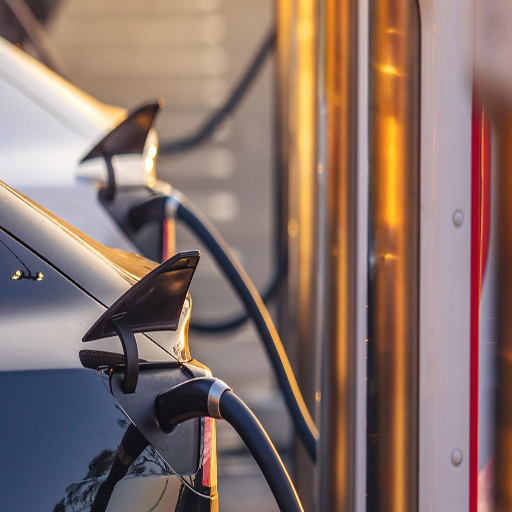
In facilitating the growing adoption of EVs, dense networks of EV charging stations come into play. This provides drivers with convenient access to charging points, so their minds are not consumed by range anxiety, making EVs a viable alternative in their daily lives and on long trips. Suppose the charging stations are conveniently accessible to the public. In that case, people might have a greater incentive to consider more unconventional fuel-based means of transportation, thereby initiating a chain that gradually leads to a decrease in greenhouse gas emissions. Additionally, such a network of charging stations will ensure equitable access to clean mobility, allowing different communities to reap the environmental and economic benefits of EVs.
What is EV Charging Station Density?
Electric vehicle charging station density indicates the number of charging stations available in a specific area or region. It is the key measurement in determining how accessible and convenient the charging infrastructure is for drivers. Higher charging station density implies a greater ability for EV owners to find a nearby station, thereby alleviating concerns about range anxiety and encouraging the widespread adoption of EVs. Factors affecting station density include population size, EV adoption rate, town planning, and investment in infrastructure development. Equitable density means equally accessible support for sustainable transport objectives.
Factors affecting charging station density
Population Density: The potential demand for EV chargers is higher in areas with an increased population density. For example, cities like New York and Los Angeles typically have a significantly higher number of chargers than rural areas. Recent studies indicate that metropolitan areas account for more than 70% of the world’s total public charging stations, with the number of EV owners, in particular, increasing significantly in cities.
Rates of EV Adoption: The rate of EV adoption is a key driver of charging point density. In areas such as Norway, where EVs accounted for more than 80% of new car sales in 2022, the availability of charging points per capita is significantly higher. Conversely, charging infrastructure may still be poorly distributed in areas where the adoption of EVs is still growing.
Government Policies and Incentives: The Establishment of EV infrastructure is quite heavily influenced by national and local government policies. For example, the United States has allocated $7.5 billion from the Bipartisan Infrastructure Law to establish a genuinely reliable and accessible national charging network. It is now focused on improving charger density and accessibility in underserved areas, thus ensuring a fair dispersal of EV infrastructure.
Urban Planning and Zoning Regulations: Urban planning policies have an impact on whether charging stations can be constructed in either public or private domains. Progressive cities, therefore, integrate EV charging stations into residential complexes, commercial developments, and highway corridors, thus reducing range anxiety while increasing convenient charging opportunities.
Private Investment and Partnerships: Private investment in EV charging stations is an essential step in increasing station density, including partnerships between public bodies and private players like charging network providers. Companies such as Tesla, Electrify America, and ChargePoint are leaders in expanding their networks, with Tesla Superchargers operating over 45,000 chargers worldwide as of 2023.
Infrastructure Cost and Land Availability: Other considerations include costs such as land acquisition and installation, which directly affect the number and placement of EV chargers. The high costs of real estate in urban core areas mean innovative solutions, such as multi-use parking structures or faster charging technology, will be required to go a long way in the efficient utilisation of space.
Taking all these into account, charging stations can be deployed strategically and equitably to spur faster EV adoption in response to varied geographic and demographic needs.
Impact on Electric Vehicle Adoption
The availability and accessibility of charging infrastructure are the most significant factors preventing the adoption of Electric Vehicles (EVs). A strong network of public charging stations helps ease range anxiety, which is inevitable when visiting an EV charging station. Studies have shown that areas with maximum charging accessibility experience higher rates of EV adoption. For example, as of 2023, Norway, a nation with a wealth of public charging stations, has achieved more than 80% EV sales penetration, thereby testifying to the importance of investing in infrastructure.
The removal of barriers to EV adoption is fostered by improvements in charging technology, such as ultra-fast chargers that achieve an 80% charge in just 15-20 minutes. The deployment of these technologies is significant in urban centers, where residents might otherwise be without the benefit of home charging. Recent data shows that the deployment of a strategically located fast-charging network increases consumer confidence, and that confidence directly relates to increased demand for EVs.
Economic incentives are directly linked to infrastructure development. Governments granting subsidies for home charging unit installation and grants to businesses for setting up public charging stations are expediting the transition to electric mobility. These measures further help ensure that charging solutions are equitable and accessible, promoting the broad adoption of EVs.
By continuing to improve and expand charging infrastructure, all stakeholders in this scheme can address some of the crucial pain points for consumers and, in turn, accelerate the global shift toward sustainable transport.
Comparative Analysis of Fuel Stations and EV Charging Stations
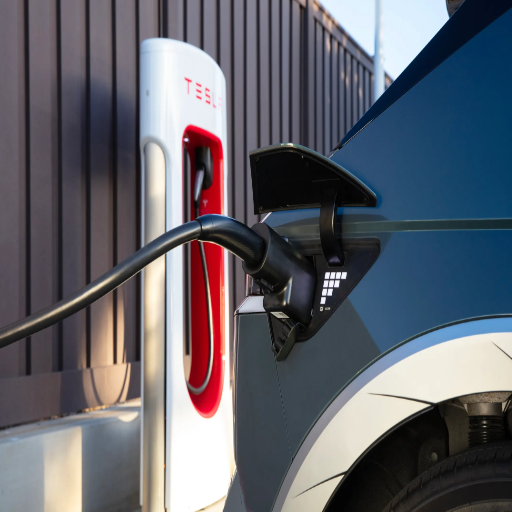
Ever since the advent of automation, fuel stations and EV charging stations have been perceived to differ significantly in terms of infrastructure, operational mechanisms, and power supply times. Traditional fuel stations offer the fastest refueling processes, typically taking just a few minutes to fill up a tank. In contrast, EV charging stations generally require more time for charging, which varies depending on the charger type (Level 1, Level 2, or DC fast chargers).
Moreover, fuel stations are typically located in centralized areas, such as city centers or highways. In contrast, EV charging stations are more decentralized, with charging integrated into residential workspaces or even public spaces. This level of decentralization ensures higher accessibility for users to charge their EVs.
Environmentally speaking, charging stations for electric vehicles are more aligned with sustainability goals, as they facilitate the integration of renewable energy sources, whereas ordinary fuel stations rely on fossil fuels. Scaling up charging infrastructure, however, requires substantial investments to upgrade the grid’s capacity to meet the rapidly growing demand.
Station Density: Gas vs. Electric
Gas stations significantly outnumber EV charging stations globally, but EV station density is rapidly expanding due to increasing electrification efforts.
|
Parameter |
Gas Stations |
EV Stations |
|---|---|---|
|
Global Count |
Millions |
Hundreds of Thousands |
|
Availability |
Widespread |
Growing |
|
Setup Time |
Decades |
Expanding Fast |
|
Refuel Time |
5-10 mins |
30 min-8 hrs |
|
Energy Type |
Fossil Fuel |
Electricity |
|
Cost Impact |
Oil Prices |
Electricity Rates |
|
Env. Impact |
High |
Lower |
Charging Density and Its Effect on EV Usage
The density of EV charging stations plays a vital role in the broader implementation and usability of electric vehicles. Currently, there is a significant disparity in charging infrastructure across different regions, with urban areas generally better equipped than their rural counterparts. According to recent knowledge, charging infrastructure installation is at the forefront in countries such as China and the Netherlands, which take pride in being home to tens of thousands of publicly accessible chargers. To illustrate, the Netherlands enjoys roughly 75,000 charge points accessible to the public, being a true testimony to their commitment to adopting the EV.
Charging density has a significant impact on the applications and operations of an electric car. Whenever charging points are scattered, they bring about so much “range anxiety”: drivers start to worry about finding a charging point during extended travels. On the other hand, high-density networks provide a level of confidence and convenience that users base their preference for electric vehicles on. According to the data, the more countries invest in establishing this infrastructure, the bigger the market for electric cars will be. For instance, Norway, which has a well-established network of charging stations, has electric cars comprising over 70% of its newly sold vehicles.
High-density networks also reduce wait times, which is a critical factor toward enhancing user satisfaction. A public fast-charging network would offer speeds of 150 kW or higher, enabling EV users to achieve a 30-minute recharge time, making it practical for both daily work trips and long-distance travel. Hence, an increased expansion and enhancement of the charging infrastructure is the key to fast-tracking the move toward sustainable transportation.
Future Trends in Station Development
The conception and installation of EV charging stations have one of the pathways through which the worlds of electric vehicle demand and technology development come together. One major technical trend is very high-power charging, with charging power levels going beyond 350 kW. Such high charging speeds could charge an EV to 80% capacity in just 15 minutes, twice as fast as usual, making it an ideal situation for resorting to personal EV usage.
In terms of another trend, we are referring to renewable energy integration, where solar power, wind energy, and other energy sources supplement and power an EV charging station, rather than electricity provided by a national grid. This aligns with current global sustainability objectives, which favor reducing the use of fossil fuels by operational charging networks. For instance, solar-powered charging stations coupled with on-site battery storage are gaining popularity, wherein the surplus energy is stored and used during peak demand periods.
Smart-grid technology enhances the value of station development. Premier innovative systems will communicate among charging stations, EVs, and the power grids, thereby maximising energy distribution and preventing grid overload. Such systems also facilitate V2G capability, wherein electric vehicles collect further energy and feed it into the grid during peak demand, thereby creating enhanced efficiency.
Another trend to watch is the significant increase in the installation of charging stations in larger urban areas and on highways. By 2030, millions of public charging ports worldwide will be required to support the shift to electric mobility, according to projections. The government and private stakeholders are investing heavily in this area. Among the countries investing in developing infrastructure worth billions is the United States.
The construction of a user-friendly digital platform provides a smooth transformation for charging. Through mobile applications and software, users can locate available charging stations, make reservations for charging spaces, and complete payment. This will translate to more convenience for users, thus persuading more people to adopt the EV. In this way, a strong ecosystem is created from which to launch sustainable transportation.
Challenges in EV Charging Infrastructure
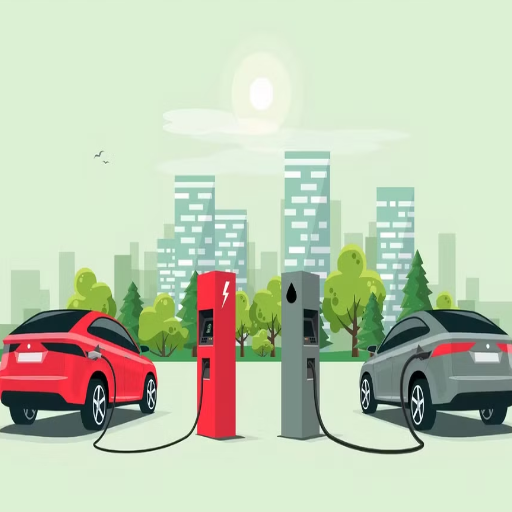
Issues such as reliability and non-uniform distribution of charging stations can be seen mainly as challenges for an EV charging infrastructure. Other than that, charging infrastructure installations and maintenance are costly endeavors and cannot encourage mass application at a much faster speed, especially in rural or less densely populated areas. The incompatibility of standards and networks poses a further complication to the user experience. Finally, it is still too slow to charge compared to refilling a conventional vehicle; this, too, acts as a hindrance to adoption. Consideration of these impediments is key in guaranteeing the existence of a reliable and widely accessible network of chargers for every EV user.
Location and Accessibility of Charging Stations
The location and accessibility of charging stations are fundamental aspects in the adoption of electric vehicles. Over the years, the charging infrastructure has been rapidly expanded by many countries, with more than 26 million EV chargers reported globally in 2023, including both public and private stations. Generally, charging stations see higher densities in urban areas where large populations exist, while the most frequent deployment of EVs is there. For example, in cities such as Amsterdam, Los Angeles, and Shanghai, leading hubs of EV infrastructure have emerged, with charging stations located within a few miles of each other. On the other hand, fewer installations in rural and less-populated areas result in fewer charging points, which can create range anxiety among EV drivers in those areas. To bridge this gap and make charging equivalent to traditional refueling points, more governments and private companies are investing in fast-charging stations and expanding their networks.
Technological Advancements in EV Chargers
In the fast-evolving scenario of EV charging technology, every innovation for quicker, more efficient, and accessible charging is welcome. One of the most exciting developments over the past couple of years has been the evolution of ultra-fast charging stations that can charge in minutes rather than hours. For example, compatible EVs can get about 200 miles of range in just 15 minutes with a 350 kW charger, immensely reducing downtime over long trips.
Furthermore, bidirectional charging is gaining traction. The technology empowers EVs to source energy from the grid but also push excess energy back to the grid or power homes in case of an outage, offering energy management and sustainability.” Wireless charging” refers to a developing technology that allows an EV to recharge without physically plugging in through electromagnetic fields. This technology is designed to enhance the user experience and has potential applications in public transportation, including buses and taxis.
Significant development has also occurred at the nexus of innovative grid systems and chargers, where the goal is to enhance energy efficiency by dynamically evaluating peak demand times and modulating power delivery between those peaks. Integrated data networks are being designed to provide real-time interfaces that notify users about station availability, charging speeds, and pricing, ensuring a seamless experience. Recent industry reports forecast a global EV charger market growth rate of over 20%, providing an ecosystem that is quickly adapting to the needs of the growing electric vehicle fleet.
This symbolizes a determined effort to eliminate the challenges currently faced by EV infrastructure, paving the way for a more sustainable and user-friendly future in electric mobility.
Consumer Awareness and Education
Consumer awareness and education can serve as catalysts to accelerate EV adoption. A lack of knowledge about EV technology, charging infrastructure, and even cost savings often inhibits prospective buyers from embracing electric mobility. Recent data indicate that educational campaigns and government incentives are crucial in bridging the gap. For instance, studies have shown that more than 40% of potential EV buyers become more inclined to purchase after receiving clear information on tax credits, cost benefits, and charging solutions available in their location.
Comprehensive public programs and community outreach workshops aim to clarify any ambiguities and shed light on owning an EV by addressing common questions about battery life, range concerns, and environmental impact. The newer, simple-interface digital solutions and platforms, equipped with real-time tools, also help reinforce the buyer’s confidence through guides and cost comparison calculators. Educating consumers, with increased efforts from both manufacturers and authorities, will gradually shift the market toward an informed audience, which will then contribute to the broader adoption of EVs.
The Future of Fueling Vehicles

The future of vehicle fuelling is in the widespread use of sustainable energy. EVs powered by renewable energy stand to usher in this transition because of their lower environmental impact and technological advancements. Hydrogen fuel cells and biofuels could be reasonable alternatives, particularly in heavy transportation. With innovations, government support, and consumer education, such a clean-fuel shift is not only possible but also inevitable, thereby ensuring a greener and more sustainable future.
Balancing Gas Stations and Charging Stations
Changing gas stations to charging stations marks the worldwide development of sustainable energy solutions, but certain things need to be balanced during the energy transition. Since 2023, the number of Electric Vehicle (EV) charging points has continued to increase, as charging stations have surpassed 2.7 million public stations worldwide in just a few years. Still, the old gas stations need to be considered, with an estimated 120,000 in the United States alone, serving millions of internal combustion engine (ICE) vehicles every day.
In the vein of ensuring an even-handed transition, many of the working gas stations are retrofitting EV charging points to become hybrid facilities for both ICE vehicles and EVs. It is an excellent option in terms of convenience for consumers and also works against any resistance to increasing EV adoption among the masses. Additionally, the presence of ultra-fast charging stations that can recharge an EV battery to 80% capacity in 15-20 minutes is alleviating concerns over charging times.
However, the availability of charging facilities is affected by the location: access disparities between urban and rural areas still exist. Urban and metro centers enjoy higher density in charging options owing to concentrated demand, thus creating a lag in rural areas that calls for targeted investment in infrastructure. Governments and private enterprises are rushing into the fray with subsidies and incentives to establish charging networks in areas deemed most in need. Equalizing gas and charging stations will require new ideas, partnerships, and policy initiatives to cater to the diverse needs of travelers and commuters during this transition period.
Implications for Environmental Sustainability
Environmental sustainability implications, in my opinion, are pretty substantial. The expansion of charging networks, combined with a shift toward renewable energy, implies a reduction in greenhouse gas emissions. By eliminating regional disparities in infrastructure, it will become possible for more people to adopt environmentally friendly transportation methods, thereby further reducing their dependence on fossil fuels. As a result, there is growing support for global efforts to mitigate climate change and promote environmental sustainability for future generations.
Final Thoughts on EV Charging and Infrastructure
The development of EV charging infrastructure is no longer merely an environmental objective-it is now an economic and social necessity. Recent developments indicate a significant increase in the number of charging stations worldwide. In 2023, for instance, the number of public charging stations surpassed two million, the highest in history, with countries such as China, the U.S., and Europe leading the charge. Furthermore, with electric vehicles now constituting approximately 14% of total automobile sales worldwide in 2023, compared to 8.3% the previous year, the global EV market appears to be growing at a brisker pace, indicating a sustained shift toward cleaner modes of transportation.
As fast-charging technology continues to evolve, achieving faster charging times and nearly a full charge in under 30 minutes (some stations provide over 200 miles of range in just 20 minutes), incentive programs and funding opportunities from governmental and private-sector organizations aim to ensure equity and coverage in rural and underserved areas. The symphony of these processes will facilitate a higher level of acceptance of EVs while emphasizing the alignment between infrastructure, innovation, and policy support.
The ambition of creating a green future powered by EVs is now increasingly tangible with the continued priority given to the scalability of renewable energy-powered charging networks and accessibility. Hence, the road ahead calls for inter-industry and inter-governmental collaboration, supported by consumers, to fulfill ambitious climate plans and lay the foundation for a robust green mobility ecosystem.
Reference Sources
“Perspectives and challenges of vehicle electrification: an academic review”
“Selection of Charging Station Location based on Sustainability Perspective using AHP Method”
Frequently Asked Questions (FAQs)
What is the difference between gas stations and charging stations?
Gas stations primarily serve vehicles powered by internal combustion engines, providing fuel through gas pumps. In contrast, charging stations are designed for electric vehicles (EVs) and offer EV charging ports to recharge their batteries. While gas stations are widely distributed, the number of EV charging stations is growing, but it still lags behind that of traditional gas stations.
How does EV charging station density compare to gas station density?
The density of EV charging stations is currently lower than that of gas stations in many regions. While the number of gas stations in the U.S. is substantial, the emerging network of charging stations, although expanding, often does not match the availability of gas stations, especially in rural areas.
What are the benefits of using an EV charging station?
EV charging stations provide several advantages, including lower fuel costs compared to gasoline, reduced emissions, and the convenience of charging at home or work. Many EV owners discover that charging their vehicles during off-peak hours results in substantial savings on their electricity bills.
How does the number of gas stations affect vehicle usage?
The number of gas stations influences vehicle usage by making it easier for drivers to refuel their gas vehicles. A higher density of gas stations per road mile can encourage the use of gas vehicles. In contrast, a lack of accessible charging stations can deter potential EV owners from switching to electric cars.
What is the current EV charging port density in the U.S.?
The density of EV charging ports in the U.S. varies by region. On average, there are approximately 22 EV charging ports per charging station; however, this number can vary significantly depending on local demand and infrastructure development. As more charging opportunities become available, the density is expected to improve.
How do charging opportunities compare to gas stations?
Charging opportunities are increasing, but they still fall short compared to the number of gas stations. While many urban areas are seeing a rise in EV charging stations, rural regions still rely heavily on gas stations. This disparity affects the convenience of owning an electric vehicle in less populated areas.
What is the trend in the demand for EV charging?
The demand for EV charging is on the rise due to the increasing number of electric vehicles on the road and growing consumer awareness of electric mobility. This trend reflects a significant shift in vehicle registrations, as many drivers seek sustainable alternatives to traditional gasoline-powered vehicles.
How does the number of gas pumps per road mile influence fuel access?
The number of gas pumps per road mile directly influences fuel access for drivers. Higher gas pump density means easier access to fuel, encouraging more gas vehicle usage. Conversely, the lower density of EV charging stations can pose challenges for EV owners, especially in areas with fewer charging options.




